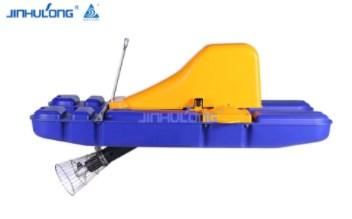Deep water jet aerator is a sophisticated piece of equipment designed to increase the dissolved oxygen (DO) levels in various water bodies. The importance of dissolved oxygen in water cannot be overstated, as it is a critical component for the survival and health of aquatic life. The deployment of deep water jet aerators can have a profound impact on the water's ecological balance, enhancing the overall quality of the aquatic environment.
The primary function of a deep water jet aerator is to facilitate the transfer of oxygen from the atmosphere into the water. This is achieved through the creation of a high-velocity water jet that disperses air or pure oxygen beneath the surface. The process not only increases the DO levels but also promotes a uniform distribution of oxygen throughout the water column, which is particularly beneficial in deep or stratified water bodies.
One of the most significant benefits of using deep water jet aerators is the prevention of anoxic or hypoxic conditions, which can lead to the death of fish and other aquatic organisms. By maintaining adequate levels of dissolved oxygen, these systems support a healthy and diverse aquatic ecosystem. The presence of sufficient oxygen also aids in the breakdown of organic matter and the reduction of harmful substances such as ammonia, nitrates, and phosphorus, which can contribute to eutrophication and algal blooms.
The impact of deep water jet aerators on water body ecosystems extends beyond the immediate increase in dissolved oxygen. These systems can also stimulate the growth of beneficial bacteria and other microorganisms that are essential for the natural purification processes within the water. By fostering a healthy microbial community, deep water jet aerators contribute to the overall resilience and stability of the aquatic environment.
Moreover, the use of deep water jet aerators can lead to improved water quality, which in turn can enhance the aesthetic appeal of the water body. Clear, well-aerated water is more visually appealing and can support a greater variety of aquatic plants and animals. This can be particularly important for recreational water bodies, such as lakes in parks or private estates, where the visual aspect of the water is a significant consideration.
In agricultural settings, deep water jet aerators can play a crucial role in maintaining the health of fish farms and aquaculture operations. By ensuring that the water is well-oxygenated, these systems can prevent the stress and disease that can result from low DO levels. This can lead to healthier fish stocks and improved productivity for the farming operation.
The environmental impact of deep water jet aerators is not limited to the water body itself. These systems can also contribute to the reduction of greenhouse gas emissions, particularly in the case of wastewater treatment. By promoting the breakdown of organic matter, deep water jet aerators can help to reduce the production of methane, a potent greenhouse gas.
In conclusion, deep water jet aerators are a valuable tool for improving the health and quality of various aquatic environments. By increasing dissolved oxygen levels and supporting the natural ecological processes within the water, these systems can have a wide-ranging and positive impact on the water body's ecosystem. Whether used in recreational, agricultural, or industrial settings, the benefits of deep water jet aerators are clear and contribute to the sustainability and well-being of our aquatic resources.
